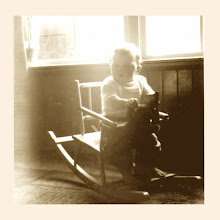My personal preference lay and lies in finding the 'otherness in the other', in the authenticity of the (so far) unknown. If I had wanted more of the same I wouldn't have ventured out into the realm of African music. How can I appreciate a crossover if I have no idea of the individual elements involved in the crossing?
 |
| Rochereau (r) with a very young Daouda Sangaré |
This doesn't mean, however, that all 'interaction' between different musical styles is uninteresting. But the real enjoyment of this can only start with the understanding and acknowledgement of the styles involved.
And that brings me to the subject of this post.
For how can anyone really enjoy Rochereau's version of "Seyni Kay Fonema" without knowing Laba Sosseh's original (here and here), and without having some knowledge of Rochereau and his background and of the music of African Fiesta (in this case National) and African Jazz?
Rochereau's version was recorded in the late 1960s and is not only interesting because it is a cover of a Senegalese song. That in itself is if not unique, at least very special. I suspect that Laba Sosseh singing a Congolese tune (Orch. Bella Bella's "Sola") is not half as special.
It is unclear why "Izeidi" is included in the title, unless Roger Izeidi is playing the (prominent) maracas in the song or is responsible for the rather abundant orchestral arrangment, as he was in the Surboum days with African Jazz. Both are possible.
The end result is very enjoyable. I doubt very much though if this song can or should be called a crossover. Not only is there no crossing going on (it's just a slightly different version of the original), but also it is not really very far from African Fiesta's style. As Franco put it in 1987, the main source of inspiration of the African Jazz school of Congolese music lies in Latin-American music. So a Latin-tinged song like "Izeidi Seyni Kai Fonema" is normal for one of the main representatives of the school.
The B-side of the single (Ngoma J 5153), "Los Probas", seems to confirm this. I haven't been able to trace the - no doubt latin - original of this song (maybe this has another title?), but it is still very much in the African Fiesta style of borrowed melodies like "Africa(n Jazz) Mokili Mobimba" and "Kayi Kayi".
The second single (Ngoma J 5156) has more of the same: an instrumental, "Négra Sanda", which could be (and I'm not saying it is) a version of "La Negra Sanda", a song composed by a certain Francia, and made famous in the early sixties by Pete Terrace (I hadn't heard of him either..) and - perhaps even earlier - by Fajardo y sus Estrellas.
The B-side, "Munequita" (and that's what he sings), certainly is not the "Muñequita" of Sonora Matancera or of Orquesta Aragón, nor Aragón's "Bella Muñequita", - but I'll be damned if the original is not Cuban.
Luckily I have traced the source of "Trembla Tiera" (Flash FL 39, the B-side of Sam Mangwana's wonderful "Bina Ringa", which has appeared on several lp's and cd's). The song was composed by a certain G. Ruiz Perez and recorded as "Tiembla Tierra" by the (still) great Orquesta Aragón.
With all these tracks I love the way in which Rochereau is trying to cover up that he has no idea what he is singing. In "Izeidi Seyni Kay Fonema" this results in a kind of melodic mumbling with a few recognisable words thrown in. In the spanish songs he is slightly more confident, but still has a tendency to drift off into gibberish.
I love it!
More Rochereau to follow soon.
Ngoma J 5153
Ngoma J 5156
Flash FL 39
or as one file.
PS± Covers of the Ngoma´s are very welcome...





















4 comments:
Dank u wel voor alweer een prachtig stukske muziek en heldere uitleg. Ik weet niet of dit commentaar geschikt is voor publicatie, u ziet maar. Het is voor mijn gevoel waar dat wereld-muziek en crossover misbruikte termen zijn. Maar, als ik het goed begrepen heb is de congolese rumba van Franco al een crossover tussen congolese en latijns-amerikaanse muziek. Crossover zonder westerse inmenging. Bij Mbaraka Mwinshehe hoor ik wel europese (engelse) invloeden, en toch noemt niemand dat crossover.Marketing, hoor ik in mijn achterhoofd. Als ik muziek luister maakt het mij niet zo uit of het puur dit of dat is, of the een mengelmoesje is , of wat dan ook. Voor mij moet een stuk muziek zijn zoals een pottebakker aardewerk maakt, ik bedoel, het moet gewoon goed zijn, bruikbaar zijn, degelijk gemaakt...
Tja, zo'n item over crossover maak misschien iets anders bij mij los dan van uw kant de bedoeling is.
Dank u nogmaals voor de prachtige muziek
Richard
Anyway, wonderful music.
Thank you
I love the background you gave for the music, I hope the singles are just as great!
sincerely
wuod K
When everything is said and done, Tabu Ley Rochereau has secured his place as one of the greatest singers from the African continent (20th Century History). As I write this, I'm listening to music from the compilation album "The Voice of Lightness" (Sterns STCD3027-28) which shows him at his best. Thanks for sharing these rare pieces.
Post a Comment